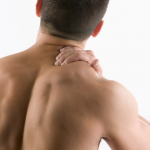 If you are either a professional or serious amateur athlete according to some statistics, skeletal muscle accounts for 40-50% of body weight, and about 85% of human pain complaints.
If you are either a professional or serious amateur athlete according to some statistics, skeletal muscle accounts for 40-50% of body weight, and about 85% of human pain complaints.
In athletes, most chronic pain issues are of myofascial origin. Not surprising since athletes tend to use their muscles much harder than the average population. Surprising enough, when athletes see a doctor about a nagging pain that won’t go away, they hardly ever examine muscles or screened them for problems. They tend to focus on tendons and joints.
Eventually the diagnoses is some type of arthritis, tendinitis or bursitis but the real culprit is more likely a trigger point and it is directly related to your muscles.
Reduce and eliminate trigger points
Neuromuscular Therapy NMT treat muscles where function has been compromised by trigger points. Therapy consists of alternating levels of concentrated pressure on the areas of muscle spasm to release the lactic acid from the muscle, resulting in increase blood flow and oxygen.
Treatments adhere to specific anatomical and physiological considerations. These considerations, combined with musculoskeletal evaluation, postural assessment, conditioning, strength training and flexibility will provide increased bio-mechanical efficiency and decreased injury potential.
Understanding trigger points: Since terms like muscle “knots”, “spasms”, and “trigger points” are often used together and interchangeably, let’s take a minute to differentiate between the three.
1) A muscle spasm is a strained muscle that involuntarily contracts and remains stuck this way. This is usually very painful and can last for a few seconds (which is the typical duration) or for much longer (as in the case of acute low back spasm that requires medical attention). The key difference between a true spasm and knots/trigger points is that the full muscle locks up, not just part of it.
2) A “knot” describes a smaller, less painful, and more persistent tightening of muscle. They typically involve only part of the muscle and can be felt through palpation as a bump or ball under the skin.
3) A “trigger point” is technically a muscle knot. However, trigger points are specific problem areas that exist in every muscle of the body. These areas are pain free with normal muscle function and mobility and can become painful through repetitive muscle use/abuse. You may have even seen books dedicated to this topic that discuss the specific areas in great detail.
Common trigger points for Athletes: You are likely to experience trigger points in different areas according to the sport, since different muscles are involved in the movement patterns. However, some pain patterns are relatively common:
Elbow pain: (tennis elbow, and golfer’s elbow). Referred from a variety of muscles, most notably the triceps, the muscles of the upper forearm, the scalene muscles in the side of your neck, and some shoulder muscles. Knee pain: referred from the quadriceps. Foot pain: referred from the calves. Ankle pain: referred from lower leg muscles.
Self Treatment: A warm shower, bath, hot tub soak, water bag, or another type of moist heat wrap will provide heat to areas that have hard, tight muscles or dysfunctional tissue. This heat helps to provide local circulation and will help you break up the pain-tightness-pain cycle. A warm-up can also be five to ten minutes of light exercise or local movement..
[schedule_now]
